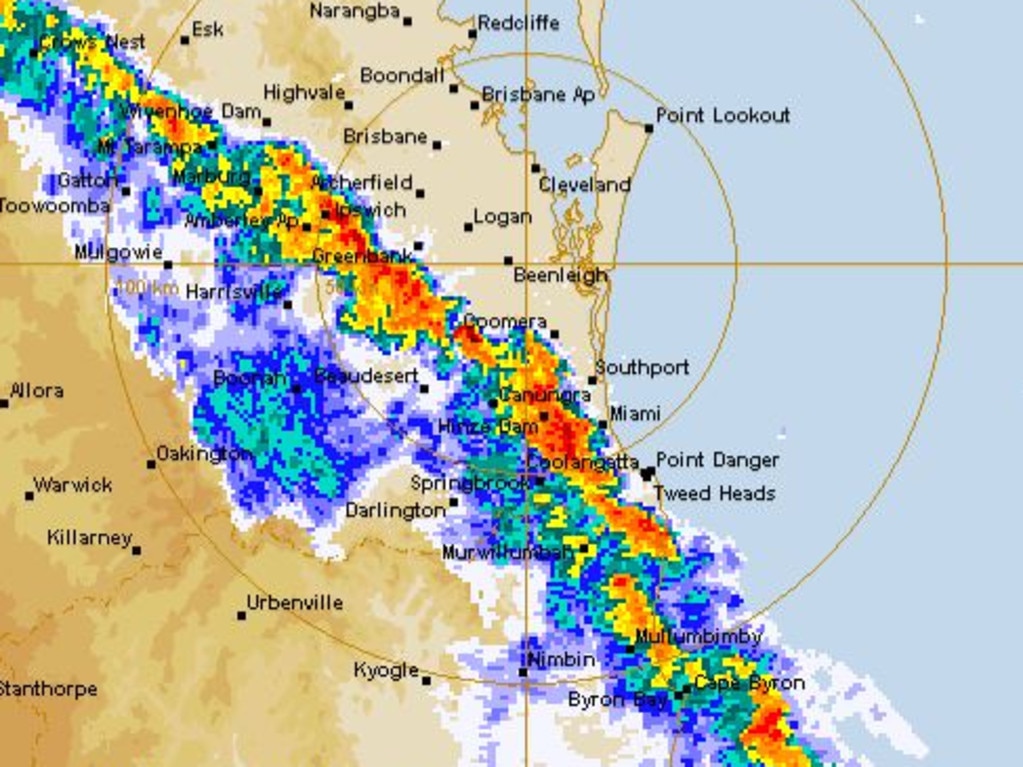Severe weather events are increasingly frequent and severe, posing significant challenges to businesses across Australia. This Summer's floods in New South Wales, Queensland and NT, severe hail in Victoria and the Christmas day storm through the eastern states, highlight the urgent need for businesses to take proactive measures to mitigate risks and ensure resilience. These events underscore a broader trend of escalating severe weather impacts driven by changes in climate and other environmental factors. The implications for businesses are profound, from operational disruptions to long-term strategic challenges.
 Lismore businesses suffered long-lasting damage from the 2022 floods. (image: EWN's James Harris)
Lismore businesses suffered long-lasting damage from the 2022 floods. (image: EWN's James Harris)
Understanding the Financial Impacts of Severe Weather
Short-term Impacts
Severe weather can cause immediate disruptions to business operations, affecting supply chains and increasing operational costs. For example, the 2022 floods in the Northern Rivers region of New South Wales led to widespread isolation of communities, and damage to buildings, impacting local businesses' ability to operate effectively. The recent floods in the Northern Territory in January of this year similarly caused significant operational disruptions, completely isolating communities and damaging vital infrastructure.
In addition to physical damages, these events often result in significant revenue losses due to interrupted operations. Businesses must contend with the costs of temporary closures, damaged inventory, and the logistical challenges of resuming normal operations. These short-term financial impacts can be particularly devastating for small and medium-sized enterprises (SMEs), which may lack the financial resilience to absorb such shocks.
Medium-term Impacts
The medium-term financial impacts of severe weather involve substantial recovery costs, including repairing damages to public and private infrastructure, replacing lost inventory, and restoring business operations. The 2022 floods in Queensland and New South Wales, affected more than 7,800 homes, with recovery efforts projected to take years. This extended recovery period places a prolonged financial burden on businesses, which must navigate the complexities of insurance claims, funding repairs, and managing customer relationships.

Flood clean-up can take months - and sometimes years - for communities to recover from (image: Bowls Queensland)
Additionally, businesses often face increased insurance premiums following severe weather events, adding to their financial strain. The ongoing costs of rebuilding and the potential for future disruptions require strategic investments in resilient infrastructure and business continuity planning. These medium-term impacts highlight the importance of comprehensive disaster recovery plans that address both immediate needs and long-term resilience.
Long-term Impacts
Long-term impacts of severe weather call for strategic adaptations to enhance business resilience. This includes investments in resilient infrastructure, policy changes, and shifts in market dynamics. Businesses must adapt to a new normal where severe weather events are more frequent and intense.
Long-term strategic planning involves not only physical infrastructure improvements but also the adoption of advanced technologies for better forecasting and early warning systems, such as those provided by Early Warning Network. Businesses must also engage in policy advocacy to support broader community resilience initiatives and collaborate with government agencies and non-profit organisations. Additionally, long-term financial planning must account for potential disruptions, incorporating risk management strategies to mitigate future impacts.

There are a number of ways that weather intelligence can help prepare your business for severe weather (image: BoM)
Proactive Measures for Business Resilience
Daily Business Decisions
Incorporating weather forecasts into daily business decisions is crucial for mitigating the impacts of severe weather. Regular risk assessments help identify vulnerabilities and inform proactive measures. Advanced forecasting and weather data can enable businesses to anticipate severe weather threats and implement timely responses.
Early Warning Network offers a suite of services tailored to help businesses manage severe weather risks effectively:
- Real-time Alerts: Receive immediate notifications about impending severe weather events through various channels including SMS, email, and mobile apps. This allows businesses to take swift action to protect assets and ensure safety.
- Customizable Forecasts: Access detailed, location-specific weather forecasts that help in planning and decision-making processes. These forecasts can be tailored to the specific needs of different industries, ensuring relevance and accuracy.
- Risk Assessments: Utilise advanced weather and climate tools to conduct regular risk assessments that identify potential vulnerabilities in operations and supply chains. These assessments are crucial for developing targeted mitigation strategies.
- Expert Support: Benefit from the Early Warning Network support team that enhance the preparedness of staff and the overall resilience of the business.
Daily decision-making should include monitoring weather patterns and implementing adaptive strategies, such as flexible work arrangements and contingency plans for supply chain disruptions. Businesses can also benefit from real-time data analytics to track weather trends and make informed decisions about operational adjustments.
Strategic Planning
Strategic planning for severe weather resilience involves investing in resilient infrastructure and diversifying supply chains. This can include retrofitting buildings to withstand extreme weather, implementing flood defences, and ensuring critical systems are robust against disruptions. Diversifying supply chains helps mitigate the risks of localised disruptions, ensuring business continuity even during severe weather events.
Businesses should also develop comprehensive disaster recovery plans, detailing steps for immediate response and long-term recovery. This includes establishing communication protocols, designating emergency response teams, and ensuring employees are trained in disaster preparedness. Strategic planning must also account for potential regulatory changes and evolving market conditions related to climate resilience.
Understanding the financial impacts, taking proactive measures, and addressing often-overlooked aspects are essential steps in safeguarding operations and supporting communities against severe weather events. Early Warning Network provides the critical insights and alerts needed to navigate these challenges effectively.
If you'd like to talk to a member of our team to learn how we can help your business prepare, contact us here